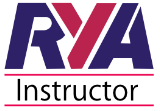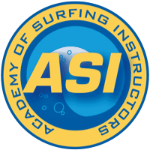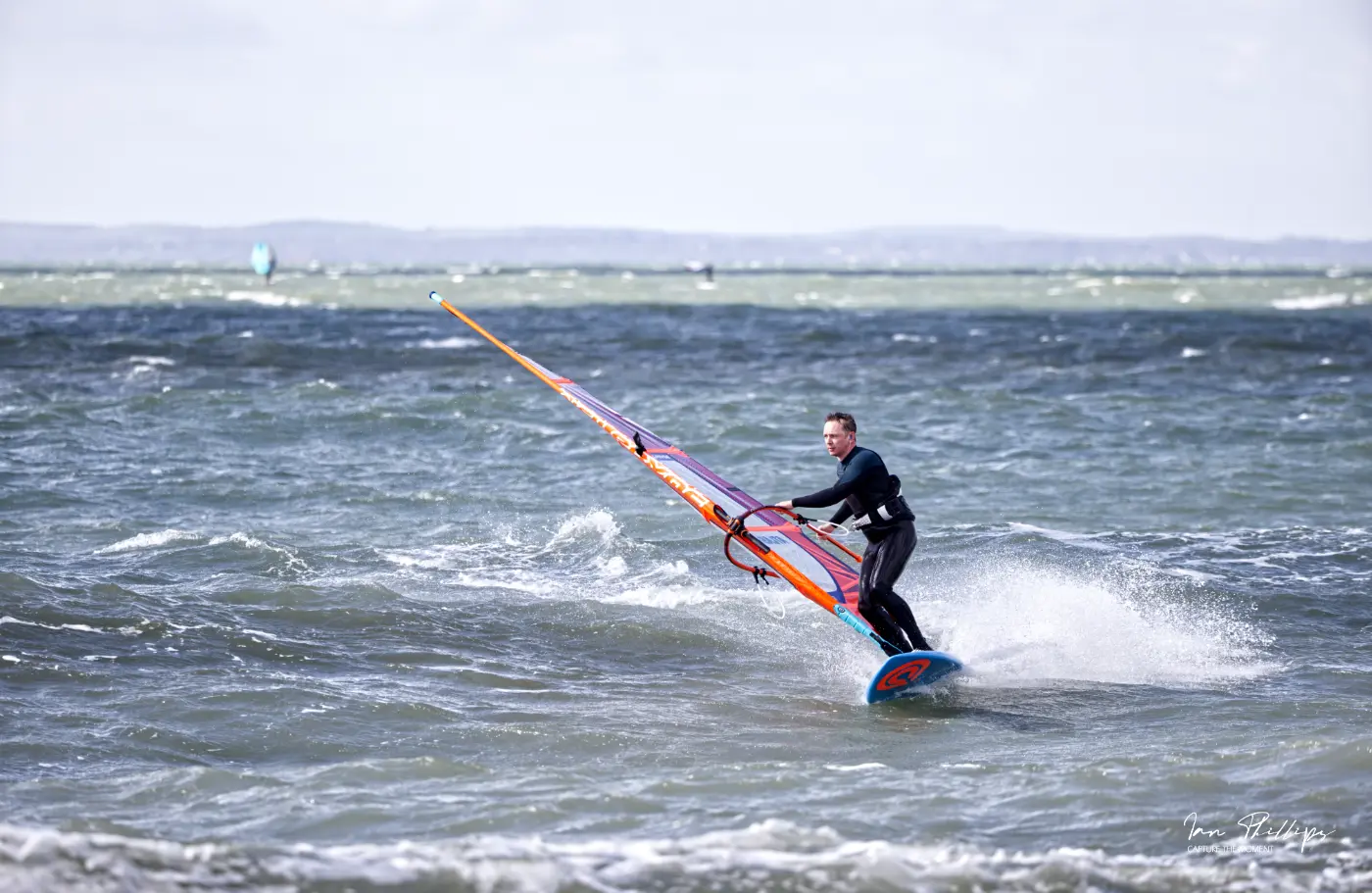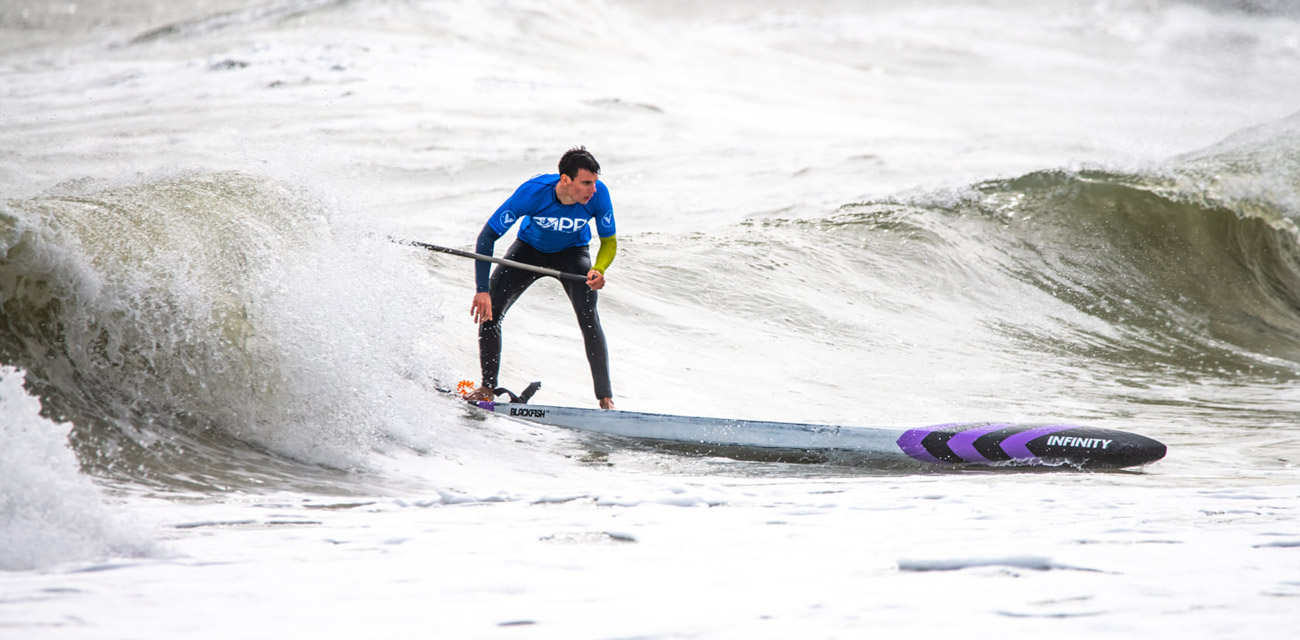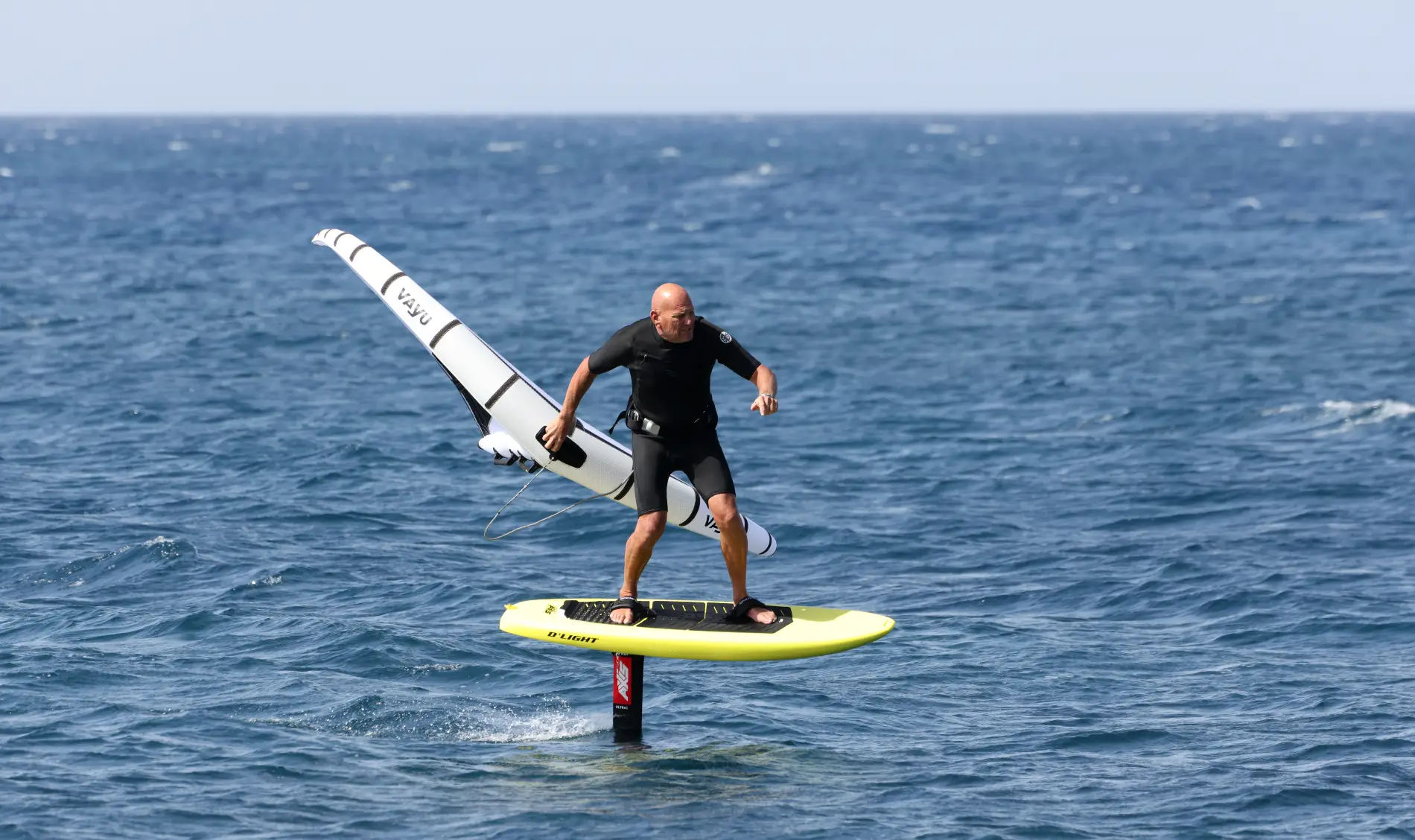Picking the right race paddle board for you is so important
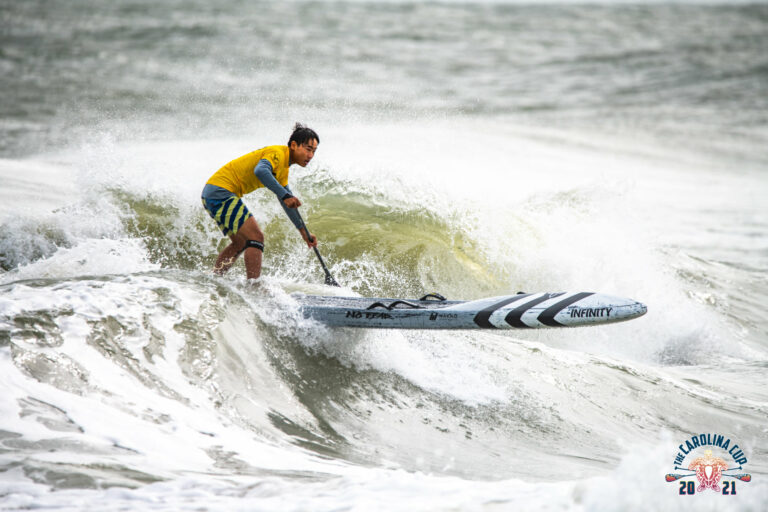
It's daunting when you look at what's out there
So many questions, like:
- What length board do I get?
- How wide should the raceboard be?
- How much volume do I need?
- Will it work in all the conditions?
Length
In SUP racing you have 3 racing classes, including the 12’6, 14 and Unlimited. These are determining board sizes being allowed to enter.
Length plays a huge part in how the board will perform for each person individually.
- Longer board have a longer waterline, that naturally increases glide
- Longer boards track straighter
- Longer boards work better for bigger riders
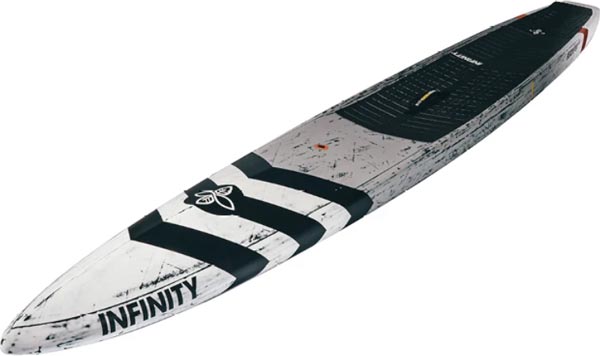
So how do I know what board length will work for me?
The 14′ sup race class is the most popular, meaning more events, especially if you have big dreams.
If you are regularly paddling on the sea, and doing big distances, 14 is the length to look at as you gain so much more from the board, compared to a 12’6. I am over 90 kg and a 12’6 for me is tricky as I cannot go as narrow as I’d like, because of the low volume, leaving me to go 14′ only.
Unlimited boards are only really used for major downwind events, so is not worth considering, unless you’re in those events or just love big ocean distance paddling.
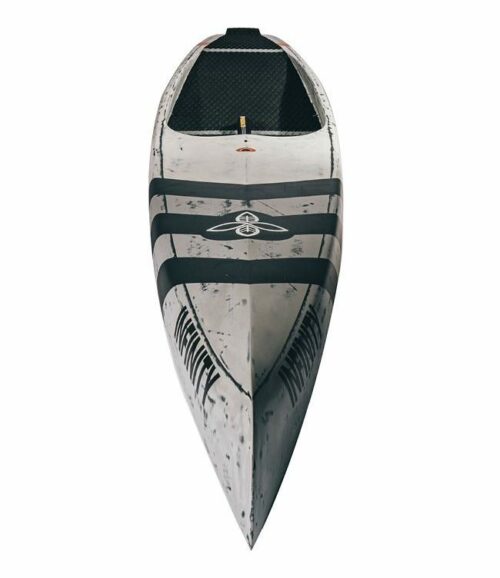
Width
This is such an important factor for everyone moving to raceboards, but often people associate narrow with fast, but it is not quite that true.
Narrower boards can move faster through the water, if you can put the power down, but if you’re not able to paddle, then you go no quicker than a wider board, so this means you need to get a board that you feel stable on.
You also have to consider the conditions you mainly paddle, if this is your one board quiver.
With pro paddlers, often using 20-21 inch wide boards, you probably need to be a bit more relaxed and look at boards around 23-25, if you’re looking to be a serious intermediate racer and 26-28 if you’re aiming at the novice classes. It isn’t however, law, and you need to do some testing to see what you can cope with first and don’t forget that one 25 inch wide raceboard, may be less stable than another of the same width due to many board design elements, including tail shape underhull shape and rails.
Hull type
Planing hull compared to a displacement hull is not really so much of an issue, aside of the performance one offers over another.
A displacement hull sits in the water more like a boat hull, and displaces water. Generally, for normal racing conditions, the displacement hull will be fast and more efficient, delivering higher board speeds and efficient glides.
You also find, that displacement hulled boards will have pointed noses, that sit into the water, lower the rocker line and promoting more efficient board speed.
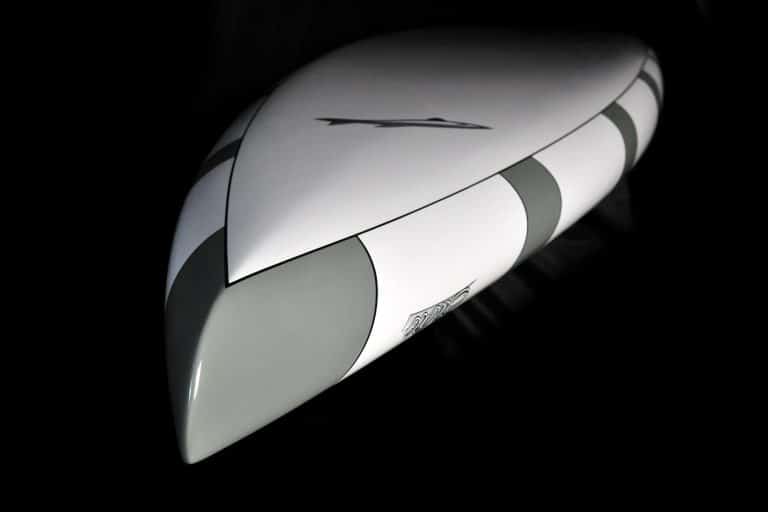
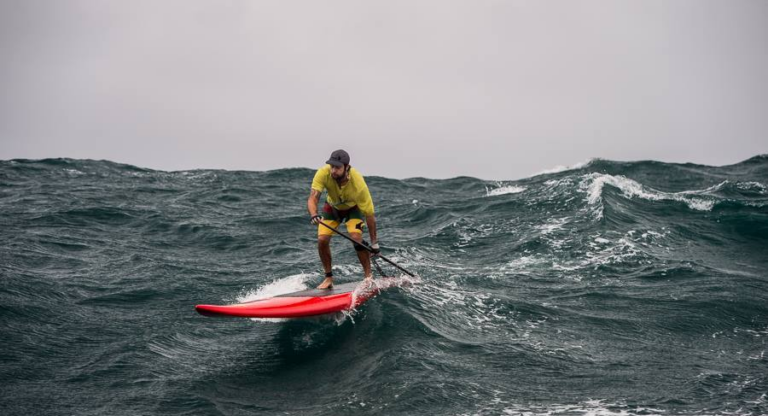
Planing hull compared to a displacement hull is not really so much of an issue, aside of the performance one offers over another.
A displacement hull sits in the water more like a boat hull, and displaces water. Generally, for normal racing conditions, the displacement hull will be fast and more efficient, delivering higher board speeds and efficient glides.
You also find, that displacement hulled boards will have pointed noses, that sit into the water, lower the rocker line and promoting more efficient board speed.
Board volume
We’ll use displacement hulls as the example on this section, as you’re more likely to be considering this for sup racing.
What you want is for a board to glide efficiently and any board that has too little volume, will mean it is sitting super low in the water or is tipping from front to back, which will not promote a smooth glide.
That same, low volume board, may feel more unstable as the board cannot help to compensate for any tipping, side to side.

We’ll use displacement hulls as the example on this section, as you’re more likely to be considering this for sup racing.
What you want, is for a board to glide efficiently and any board that has too little volume, will mean it is sitting super low in the water or is tipping from front to back, which will not promote a smooth glide. That same, low volume board may feel more unstable as the board cannot help to compensate for any tipping, side to side.
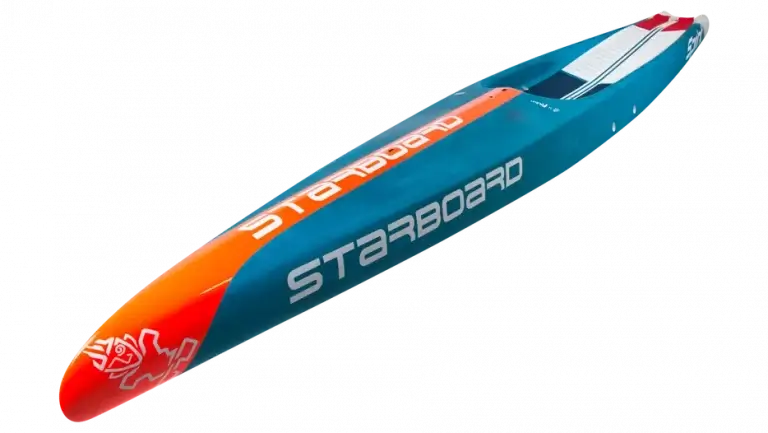
The Starboard Sprint, much like the Infinity Whiplash Dugout, has high sides either side of the standing area, which offers support and secondary stability right where it counts.
At the same time, a lower volume in certain part of the board, e.g tail, cab help with buoy turns, especially if the paddler is a lighter weight. I know from experience, the Starboard Sprint has a lot of volume in the tail, so you really need to get right back to pivot it, whereas the Infinity Whiplash and Infinity Blackfish, have lower volume tails so are easier to pop.

Construction
A raceboard, will often come in a variety of constructions and that can include inflatable, carbon, glass fibre/wood and variations of such.
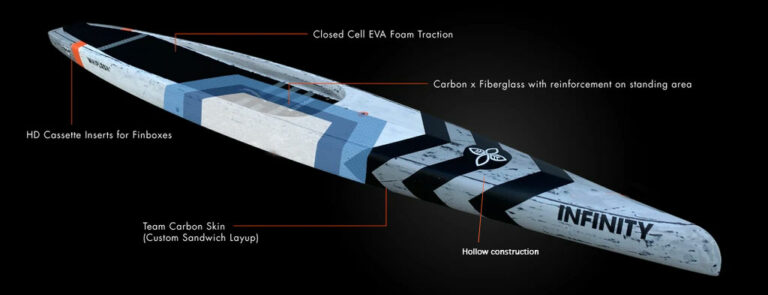
The ultimate purpose of a raceboard is to go fast, and in many respects, all the constructions offer speed, but, it is important to realise that the difference between an inflatable and hard board, can be quite significant.
Not so much from the material perspective, but from the shape and feel offered up. An inflatable board is limited in how the under hull can be shaped as well as its nose and tail. The rails cannot be shaped like a hard board, so in essence you have a pay-off between performance over convenience.
If you’re comparing a hard board construction, then the weight reduction of carbon over glass/wood, can be quite small, so depending on how serious you are, determines how much that really matters, whereas stiffness, can make a substantial difference so all of these factors need to be considered, especially if you’re paddling on the sea.
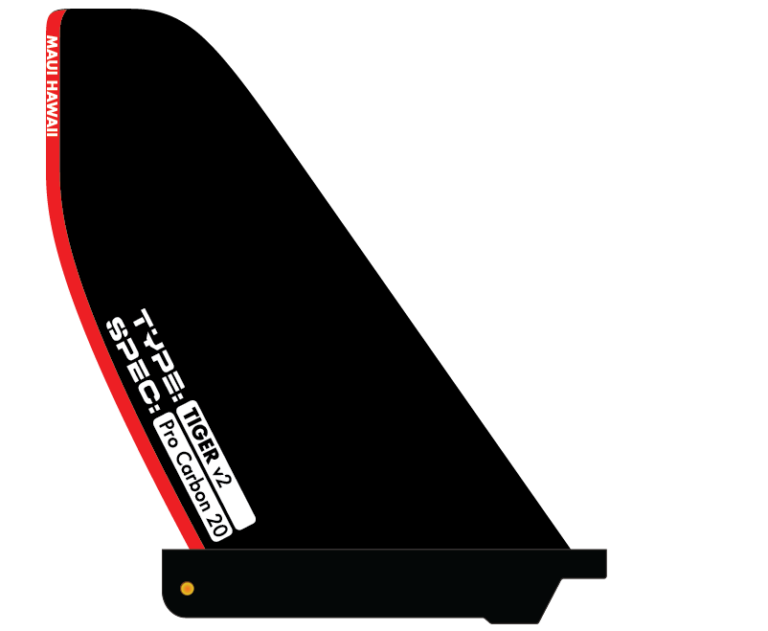
Fins
When you’re deciding on a fin, you need to look at where you’re paddling more than anything else.
Fin height, length, chord depth, rake can all make a major difference to the feel of a fin, but ultimately this does come back to where you paddle as well.
A deeper, longer fin, can help aid stability, but in turn can increase drag. A shorter in, may be more manoeuvrable and offer less drag, but may be less stable. That said, if you’re heavily reliant on the fin to aid in stability, you may want to consider a wider board.
If you’re paddling on rivers or areas where weed can build up, then you definitely want something more raked back to help shed weed.
Beach sprints, or in and out races through beach breaks, will work better with a shorter fin as will the turns and surfing aspect.
Board features
When we look at features, we’re really looking at a few necessities, including:
Leash points, deckpad, handles, mounts, tail pad.
Leash points are generally in the tail area, but you can have them in the middle of the board also. Personally, a tail leash is more useful and if you need to keep it clear of the water, make sure you’re using a coiled leash and waist belt.
Deckpad and tail pad are super important as they give you the grip. Having a grippy pad along with tail pad can let you be more dynamic in your movements, especially buoy turns.

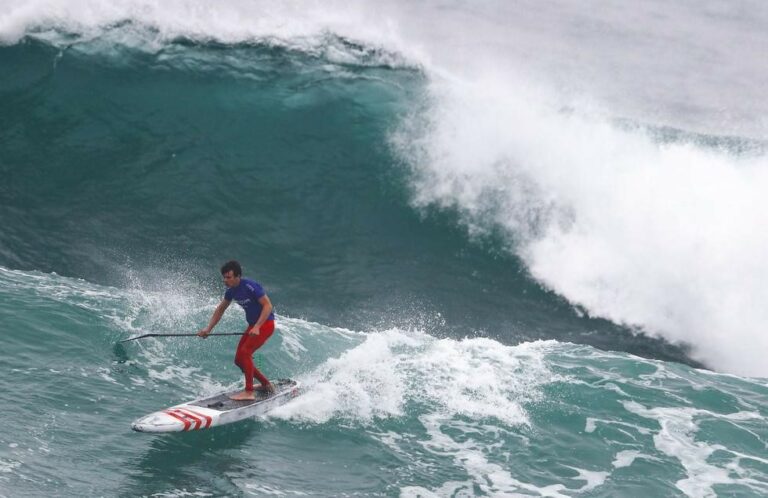
Durability
You’re going to spend a lot of money on a raceboard, so you really want it to last more than one season.
Superlight constructions can be susceptible to damage on land, whereas a more robust construction can take more of a knock.
Carbon boards, if made properly, are pretty tough unless you drop them onto a hard surface, so something like the Jimmy Lewis Sidewinder or Infinity Blackfish PVC would fall into the super tough class, whilst still being competitively light.
We always tell people, that most damage occurs on land, so bag it and tape it on the rails, along with your paddle. That way you’re enjoying and protecting your investment.
The upshot
We’ve sold plenty of raceboards over the years, and have always done our best to recommend and supply the right board for each paddler. Check out the range of sup race boards we have, and let’s chat. We’ll make sure we consider everything about you, your paddling environment and the many other factors that go to make the right board choice.
